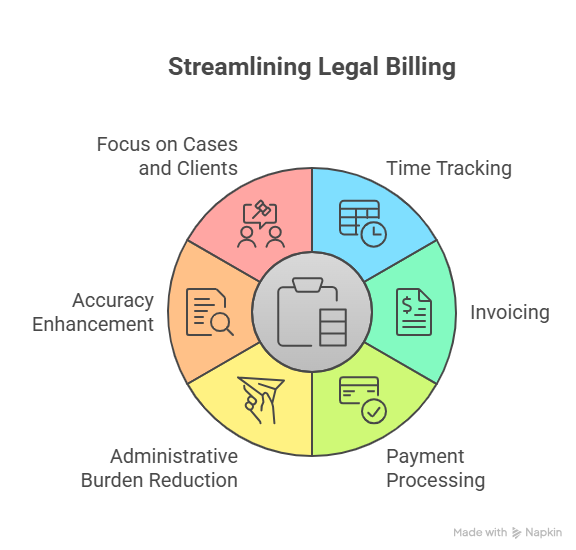In the modern law firm, efficiency isn't just a goal—it’s a necessity for profitability and growth. Two of the most critical tools in your tech stack are your practice management suite and your legal billing software. While each can function independently, their true power is unleashed when they are seamlessly integrated. For firms still juggling disconnected systems, here’s why ensuring your billing software plays nice with your practice management suite is a non-negotiable upgrade.
1. Eliminate Data Duplication and Human Error
When your systems are siloed, your team is forced to perform double the work. An attorney enters time in the practice management system, and then a paralegal or accounting staff must manually re-enter that data into the separate legal billing software. This process is not only a massive time drain but also a breeding ground for costly errors. Transposed numbers, missed entries, or incorrect matter codes directly impact your revenue. Integration automates this flow, ensuring that every billable minute captured in your practice management system is instantly and accurately reflected in your billing platform.
2. Accelerate Your Cash Flow
Time-to-cash is a vital metric for any business, especially law firms. The longer a finished invoice sits on a desk, the longer it takes to get paid. A disconnected process creates bottlenecks. With an integrated system, the moment work is completed and approved, it can be instantly transformed into a professional, detailed invoice and sent to the client. This seamless transition from work to invoice can shave days—or even weeks—off your billing cycle, dramatically improving your firm’s financial health.
3. Gain a Unified Financial Picture
A practice management suite holds your matters, deadlines, and client communications. Your legal billing software holds your financial data, trust accounting details, and accounts receivable. When integrated, these two systems create a single source of truth. You can instantly see the financial health of any matter without switching screens or running complex reports. How much have we billed for Client X? What is the outstanding balance on Matter Y? This holistic view empowers firm leaders to make smarter, more informed strategic decisions about pricing, staffing, and case acceptance.
4. Enhance Client Trust with Transparent Invoices
Today’s clients demand clarity. An integrated system allows you to create incredibly detailed and defensible invoices. Because your time entries and expenses are directly tied to specific tasks within a matter, your invoices can automatically include matter IDs, task descriptions, and even links to related documents. This transparency reduces client disputes and questions, leading to faster payments and stronger attorney-client relationships.
Conclusion: A Symphony, Not a Solo Act
Think of your technology not as a collection of individual tools, but as an orchestra. Your practice management suite is the string section, and your legal billing software is the brass. Alone, they can make music, but together, under the direction of seamless integration, they create a symphony of efficiency, accuracy, and profitability. Investing in a unified system isn’t just a tech upgrade—it’s a strategic investment in your firm’s future.





Comments